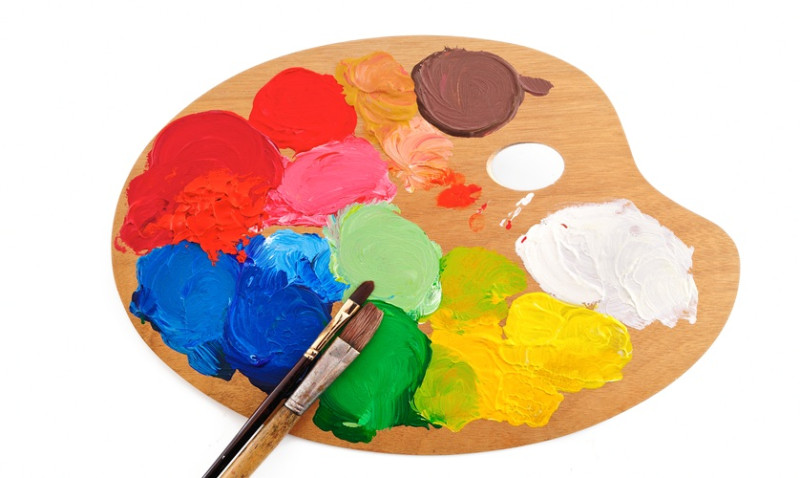
As an artist navigating the online world, I’ve learned that selling your art isn’t just about talent — it’s about strategy. Whether you're a painter, illustrator, digital artist, or sculptor, presenting your work to the right audience can mean the difference between a side hustle and a successful business. Over time, I’ve picked up some key lessons that not only made things easier but also saved me a massive amount of time. If you're based in the UK and aiming to attract DIY homeowners, interior designers, young professionals, or trade pros, read on for genuinely practical and time-saving advice.
1. Build a Professional Online Portfolio
Your art deserves a professional digital home. An Instagram page full of images is helpful, but it doesn’t replace a curated portfolio that reflects your brand. Whether you use platforms like Shopify, Squarespace, or even Etsy, make sure your gallery highlights your best work and tells a story across collections.
Organise your work into themes such as “Minimalist Prints,” “Nature-Inspired Canvases,” or “Bold Abstracts,” especially if you're trying to appeal to design-conscious homeowners and interior pros. This makes it easier for potential customers — like architects or tradesmen looking to decorate a newly completed project — to find exactly what suits their needs.
Keep your site clean and easy to navigate. Think like a customer: Is it obvious what you’re selling? Is the pricing clear? Do they know how to buy from you with a few clicks? These small UX tweaks make a big impact.
Most importantly, make your site mobile-friendly. A large part of your audience, especially younger homeowners and professionals, will likely browse on their phones or tablets. Load times, image formatting, and clear mobile menus can boost conversions dramatically.
2. Use High-Quality, Stylised Photography
This might sound obvious, but it’s where many artists go wrong. Your artwork needs to be presented with lifestyle-focused, high-quality visuals. People don’t just buy art — they buy the feeling it will bring to their space. Most of your target audience is visual and wants to see how the art will look in real interiors.
If you can, invest in professional lifestyle photography or use mockup generators. Show your work in situ: over a fireplace, hanging in a stylish bathroom, or as a centrepiece in a modern lounge. This not only engages interior designers and homeowners but helps them subconsciously picture your work in their own spaces.
DIY enthusiasts and self-renovators are especially tuned into aesthetics — they’ve likely saved rooms on Pinterest or are mid-way through choosing colour palettes. If your piece fits into that journey visually, chances are they’ll hit “Buy.”
Don’t forget close-up shots as well. Texture, brush strokes, and framing are all vital parts of your art — and they influence perceived value. A professional product presentation allows you to charge a premium price point.
3. Optimise Product Descriptions and Titles for Search
SEO isn’t just for big businesses with corporate blogs. It’s one of the easiest and cheapest ways to make sure your art is discovered by the right people. With a few smart tweaks, you can boost visibility and appear in organic search results on Google, Etsy, or even Pinterest.
Start by thinking like your customer. Someone looking to redecorate their flat in Leeds might search for terms like “botanical wall art for living room” or “black and white line art print A3 UK.” Use keywords that match how your audience speaks and shops, especially with local and common UK spellings.
In your titles and descriptions, be clear and concise. Include dimensions, medium, colour palette, and how it might be used (“Perfect for hallways, home offices, or modern kitchens”). Make sure every product page has at least 300 words of content — search engines love rich details.
Include alt text on all your images hidden behind the scenes — this boosts accessibility and also helps search rankings. It’s a five-second task that pays off over and over again!
4. Streamline Customer Service and Fulfilment
Nothing kills your creativity faster than constantly replying to the same messages. Make a list of frequently asked questions — from “Do you offer framing?” and “Is this print signed?” to “When will it arrive in Glasgow?” — and answer them clearly on each product page or in a quick FAQ area.
If you offer customisation or made-to-order items, make the process foolproof. Use dropdown menus, pre-set options, and clear image guides so you’re not stuck explaining the same options repeatedly over DM and email. Clear instructions also reduce the chance of mistakes or awkward requests.
Now the biggie: fulfilment. If you’re packing and shipping everything yourself, that’s great — but it consumes tons of time. Explore options like print-on-demand services that integrate with your store (many UK-based print labs offer eco-conscious and artist-focused fulfillment). This allows you to focus on creating instead of shipping labels and bubble wrap.
Make sure your shipping times, packaging, and tracking are reliable. Remember, your buyers might be on tight project deadlines (especially interior designers or architects), so communication and timing are crucial.
5. Lean Into Social Proof and Customer Photos
Your happy customers are your best sales reps — use them! Snaps of your artwork hanging in real homes or spaces are GOLD. Encourage buyers to share and tag you. Showcase these on your site, on product pages, and across your social feeds. This builds trust and gives buyers styling inspiration for their own homes.
If you're just starting out, send a small discount code or a freebie in return for social posts or email reviews. Over time, this library of feedback becomes a huge trust builder — especially when you’re selling pieces at higher price points.
You can even dedicate a “What Our Customers Say” section on your site. Here's a simple way to present some social proof visually:
| Customer | Location | Review |
|---|---|---|
| Rachel D. | Manchester | “Absolutely love my coastal print set. It transformed our hallway – looks custom-designed by a pro!” |
| Luis M. | Brighton | “Bought for my partner’s birthday – arrived quickly, beautifully packaged, and she loved it!” |
| Sophie K. | London | “Fits perfectly in my home office. Can’t believe the quality for the price. Will buy again!” |
6. Know Your Audience — and Speak Their Language
This might be my favourite (and most overlooked) tip. Know exactly who you're speaking to. Is your ideal customer a young London homeowner? A self-employed designer sourcing art for client projects? A Manchester-based builder designing a new showroom?
When you define your audience, everything gets easier — product naming, visuals, how you describe your work, and where you advertise. For example, simple, monochromatic graphics might appeal to Scandi-style interiors or modern UK flats. Meanwhile, retro landscapes might appeal to creative professionals wanting personality on their studio walls.
Use UK-specific terminology in your content and marketing: talk about “flats,” “skirting boards,” “lounges,” “kitchens” — not “apartments,” “baseboards,” or “living rooms.” These localisation tweaks boost relevance and trust quickly.
You’ll also benefit from platform-specific knowledge. Pinterest is great for trend-conscious homeowners and DIY enthusiasts. LinkedIn may attract interior designers and professionals sourcing art for workspaces. Email marketing is excellent for customers who’ve bought before and are likely to return for new collections.
Final Thoughts
Selling your art online isn’t just about being “found.” It’s about giving your audience every reason to engage, buy, and come back for more. These tips have helped me polish my process, reduce admin stress and — most importantly — give my work the best chance to shine.
Whether you’re just starting out, or looking to bring more professionalism into your art business, take time to refine your systems. The smoother your process, the more time you’ll have to do what you love — creating amazing pieces that brighten real spaces across the UK.






